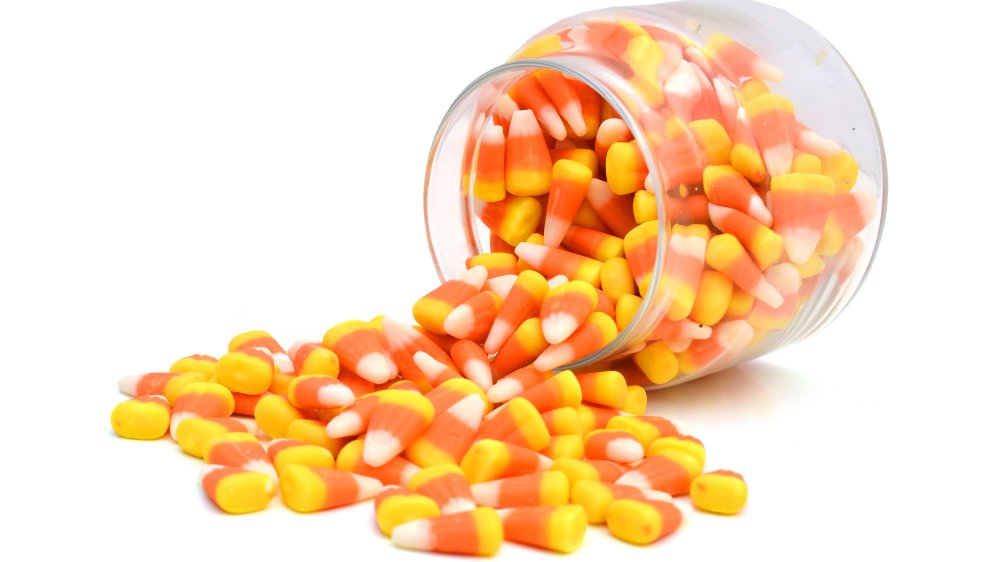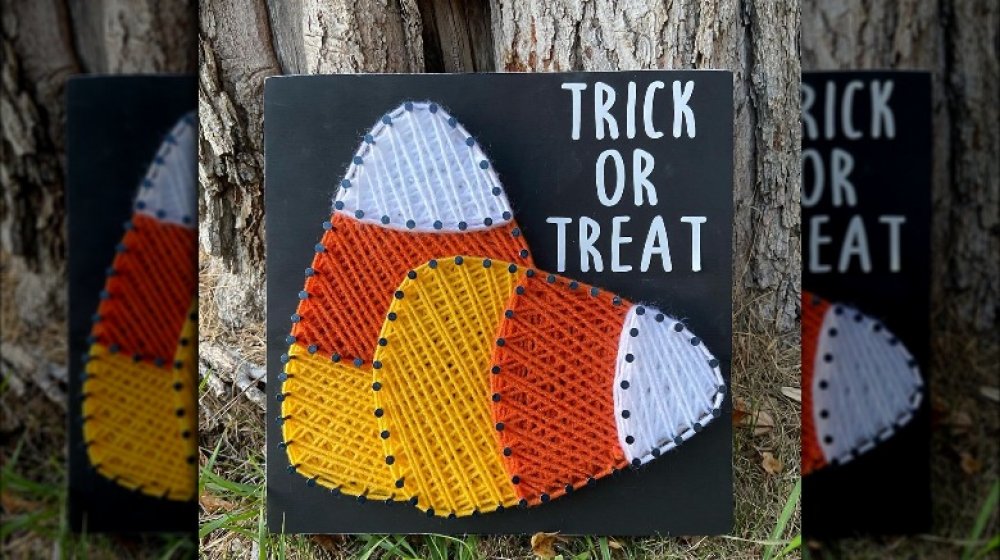The Unusual Name Candy Corn Once Had
Certain candies only seem to surface around a particular holiday. You've got your Sweethearts for Valentine's Day, Peeps at Easter, and candy canes around Christmas. As for the biggest candy holiday of them all, nothing says "Halloween" quite like candy corn – even if it has topped CandyStore.com's definitive list of worst Halloween candies two years running now. Say what you will about their taste – those little orange, yellow, and white wedges do blend in nicely with Jack-o-lantern and autumn-leaf displays. Candy makers will produce about 9 billion individual candy corns this year (via Better Homes & Gardens), with many of those selling this time of year. But candy corn wasn't always tied so closely to Halloween, and it wasn't always called "candy corn," either.
Candy corn is old-school. It's one of a handful of candies, including Necco Wafers, which have remained unchanged since the 19th century. The Jelly Belly Candy Company, formerly known as Goelitz, has been making candy corn since 1898 using sugar, fondant, corn syrup, vanilla, and marshmallow creme (via National Geographic).
Candy corn wasn't associated with Halloween until the 1950s
When candy corn was first invented, the trend in candy making was to mold the confections into shapes that would be relatable to children on farms – about half of the U.S. workforce was in farming at the time, after all. Along with the famous cone-shaped candy corn, you might find candies shaped like turnips, chestnuts, and pumpkins.
What set candy corn apart from similar candies more than a century ago was that corn wasn't really a people food. So candy corn was often called "chicken feed" in those days, and candy corn packaging up to the 1920s prominently featured a rooster (via History Channel). Corn in the days before World War I was coarse and not palatable, more suited to pigs and chickens than humans. The sweet varieties of corn we now eat off the cob every summer weren't developed until later (via The Atlantic).
Just as you had to feed your chickens on the farm every day, candy corn or "chicken feed" was sold as a year-round treat. Halloween wasn't such a candy-heavy holiday until the 1950s, and that's when candy corn started to be marketed in the fall as a Halloween option. Now candy corn is way more associated with Halloween than it is with chickens. And if people or some reason want to associate their candy with chickens, then there's always Peeps.

